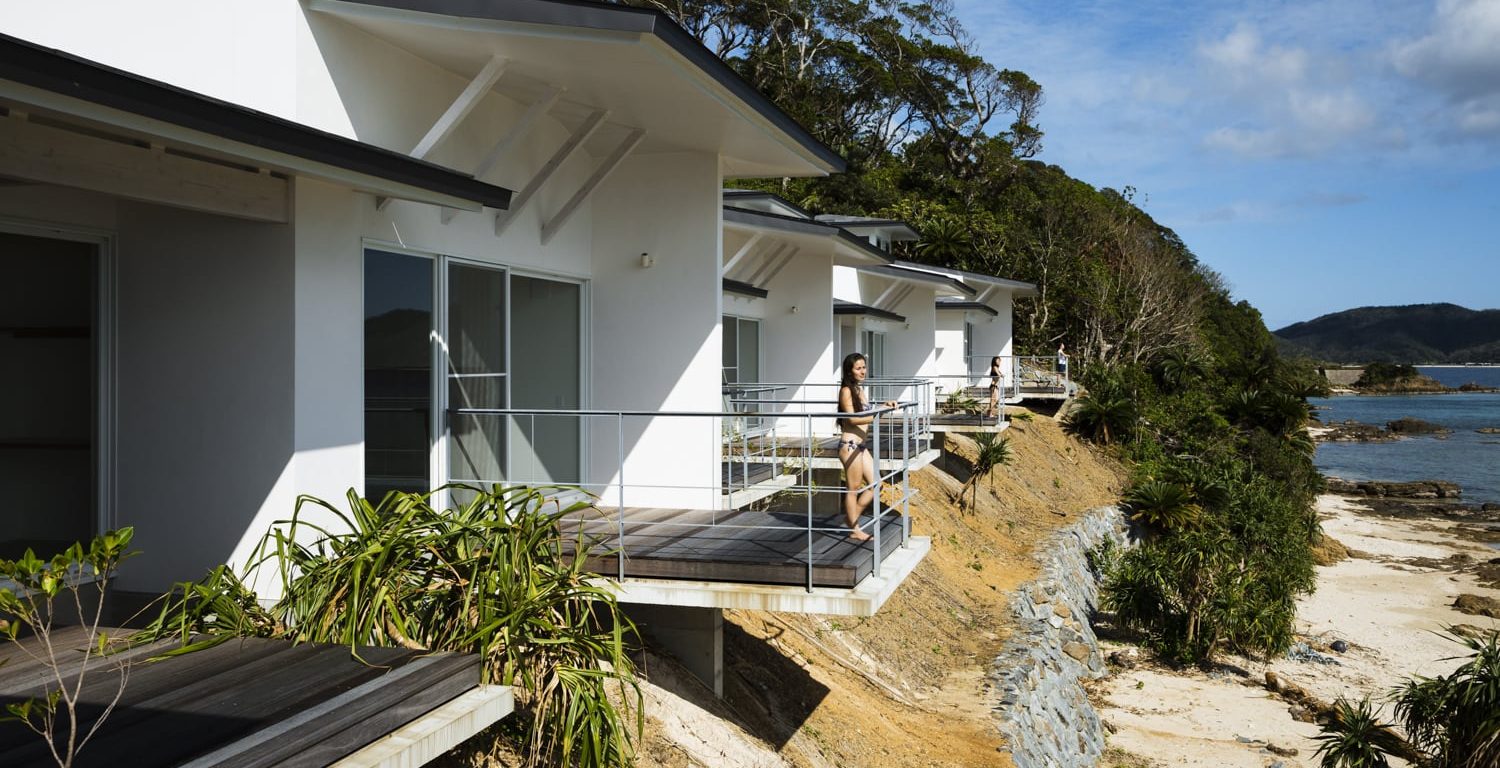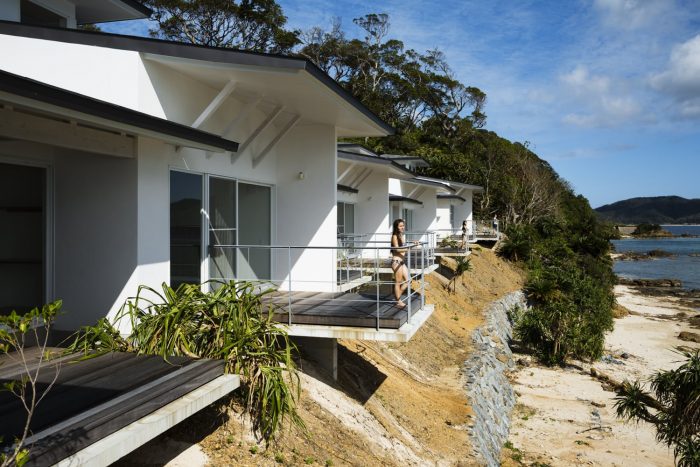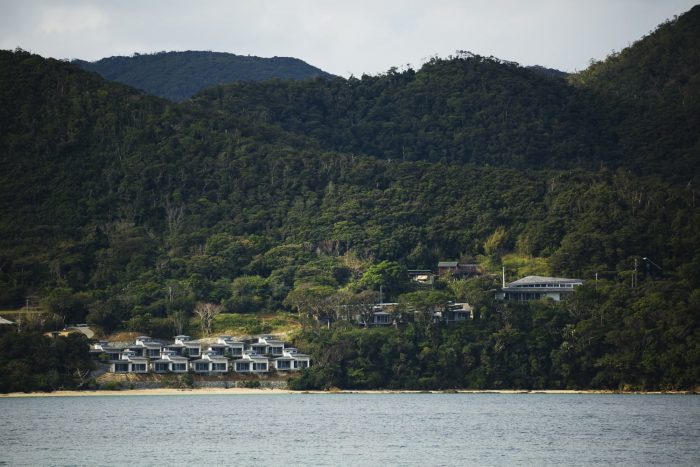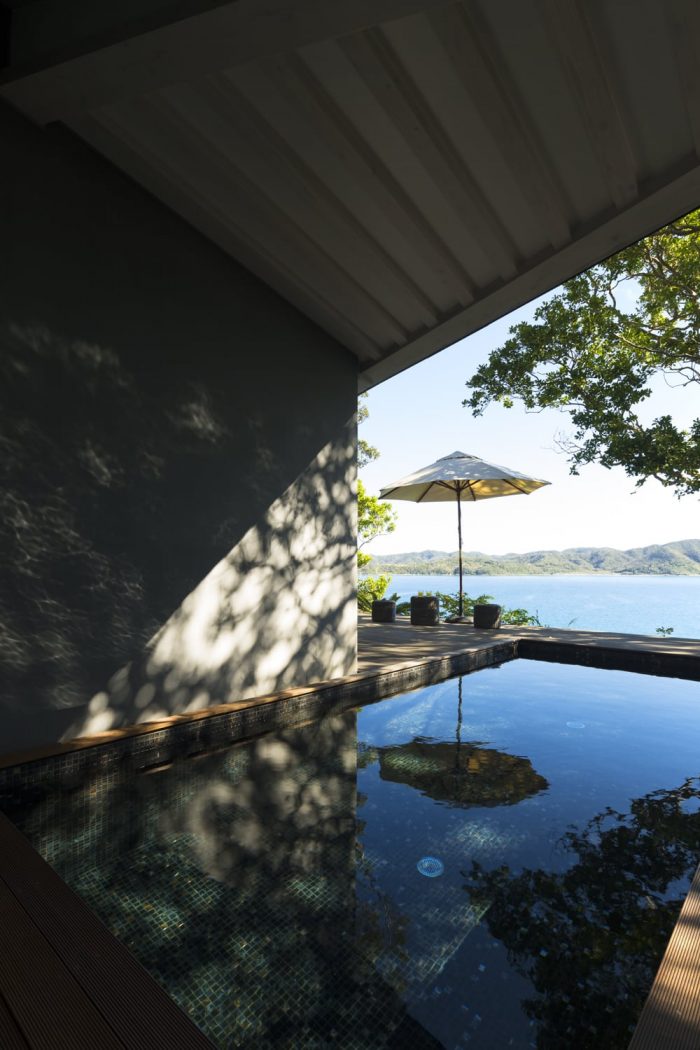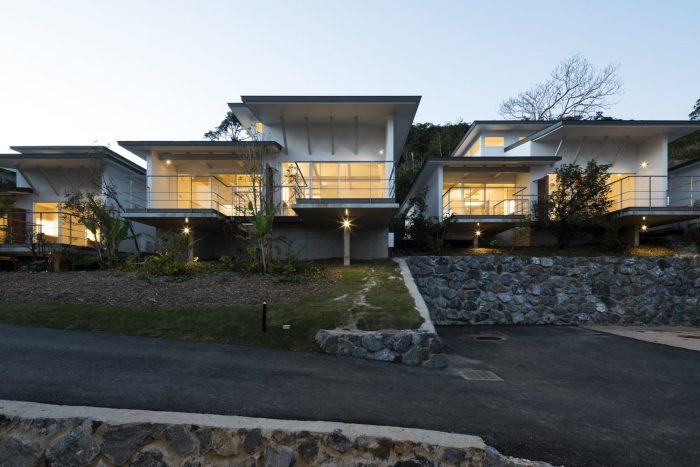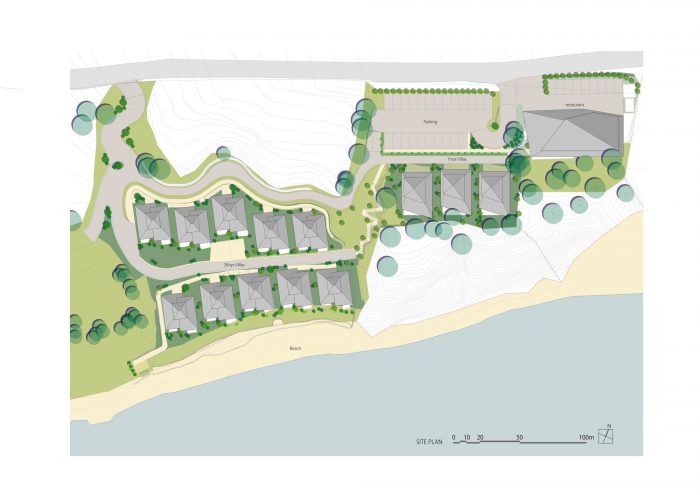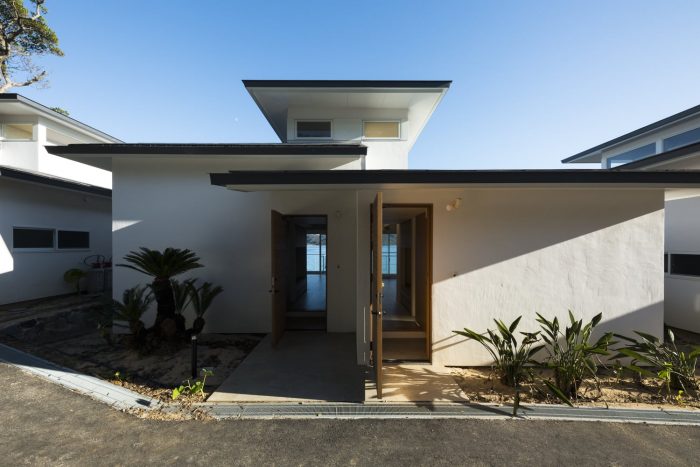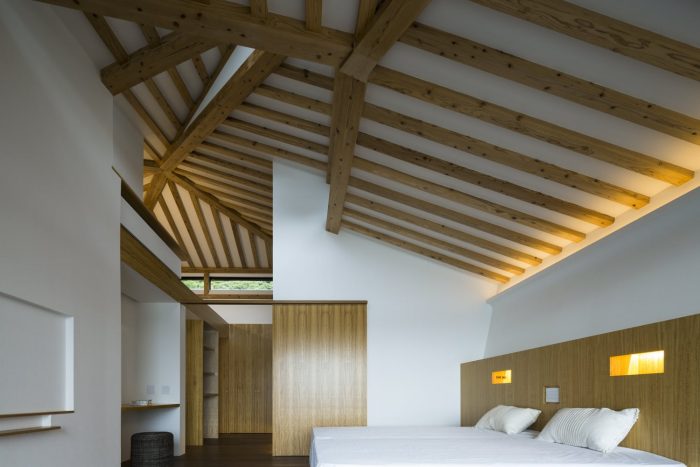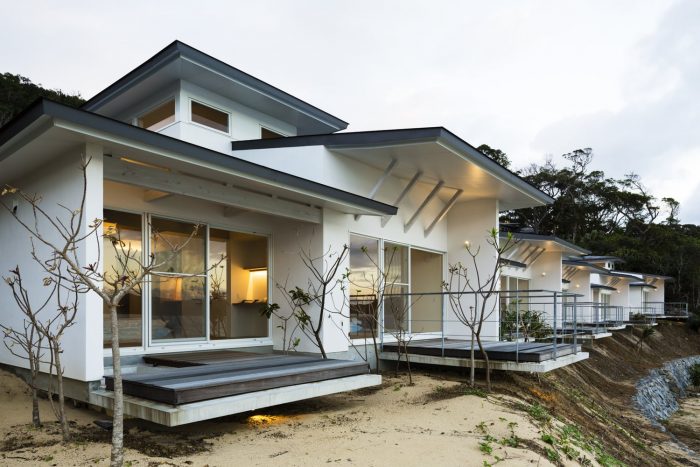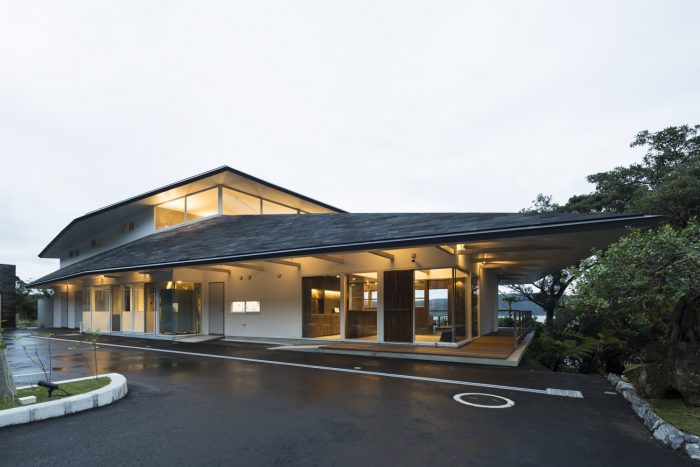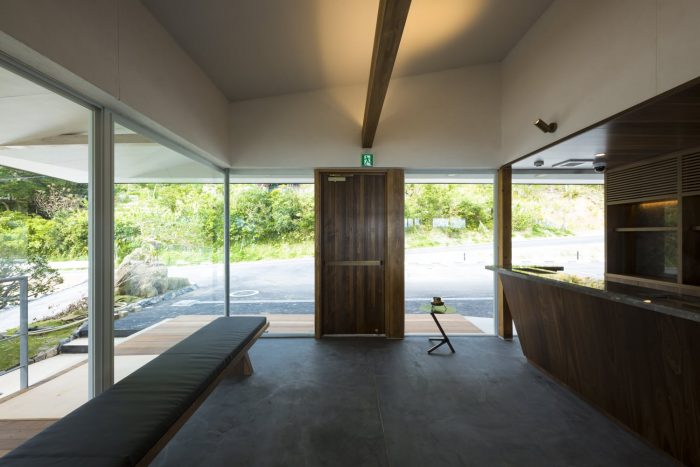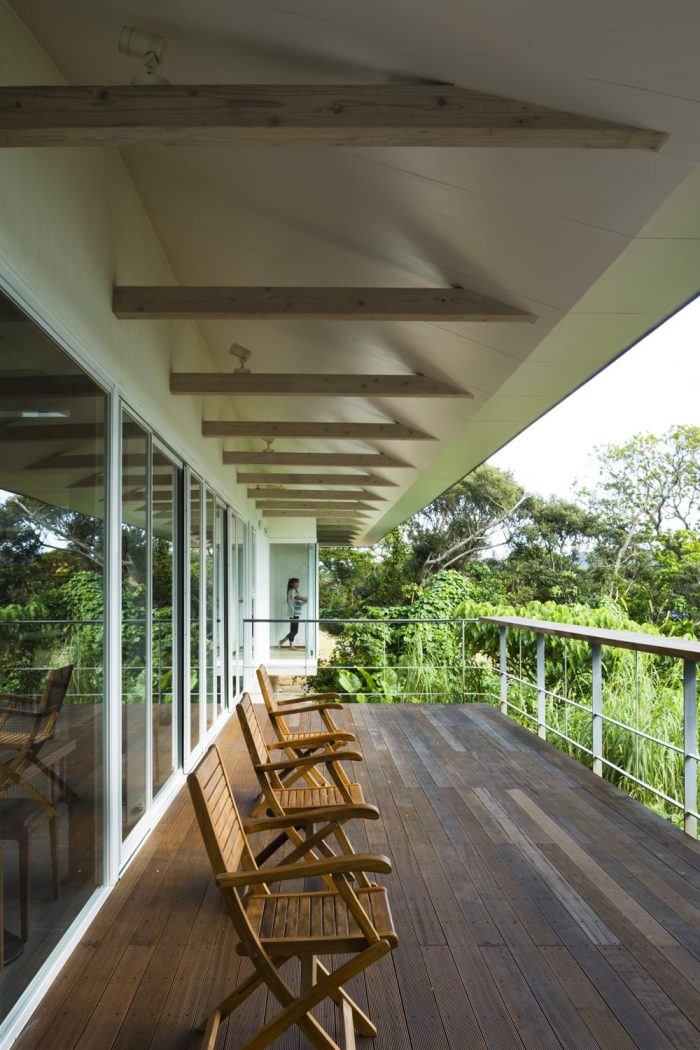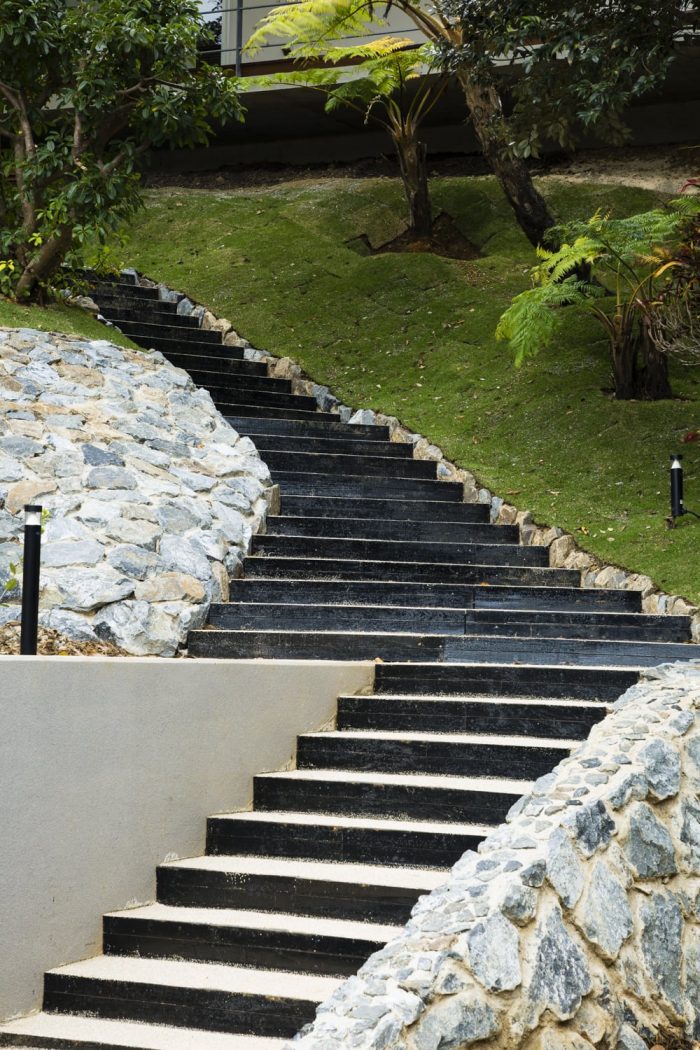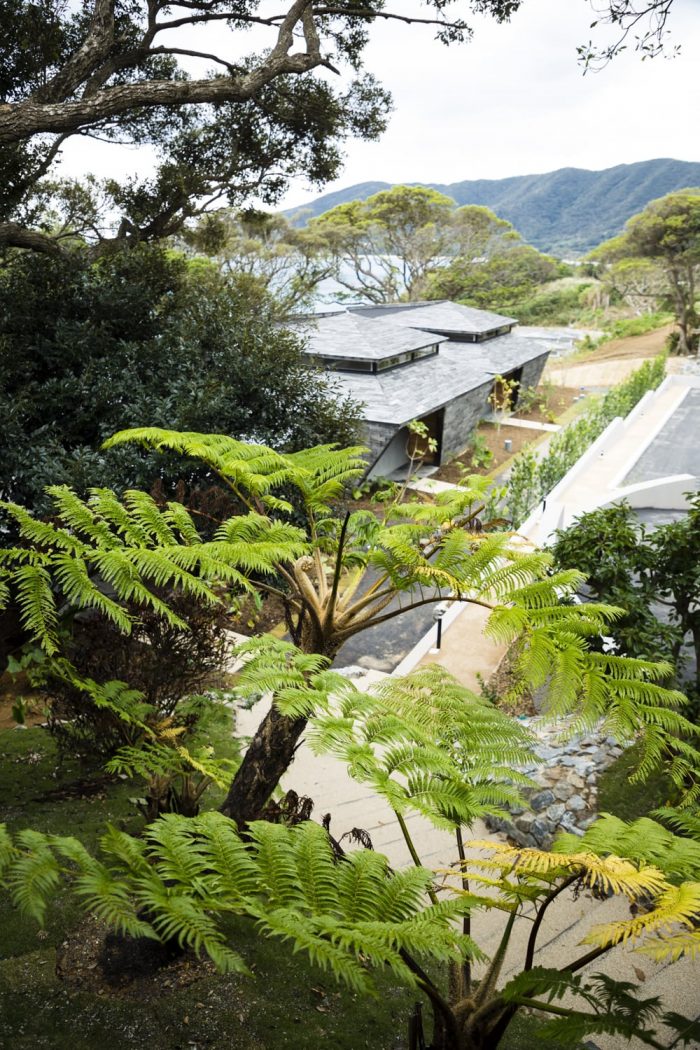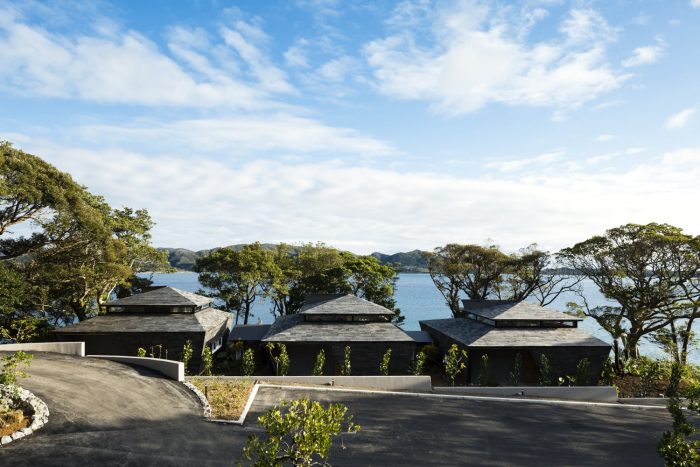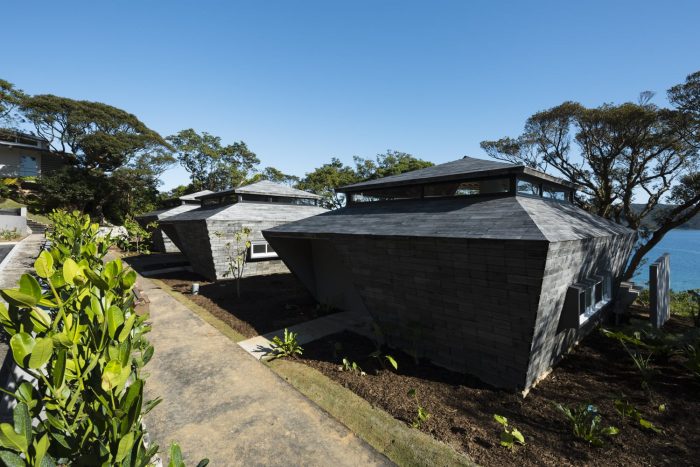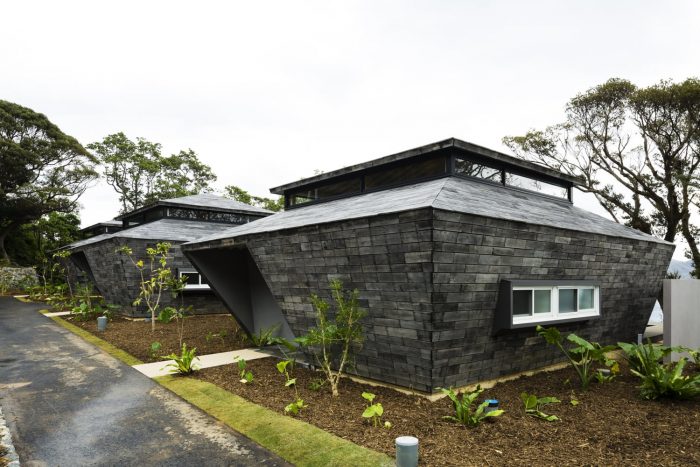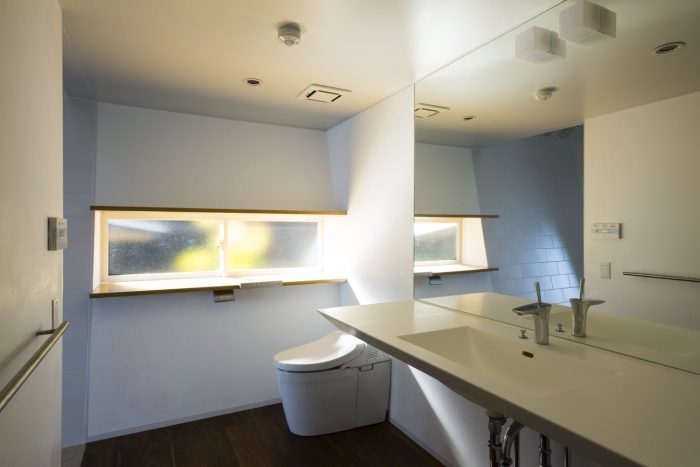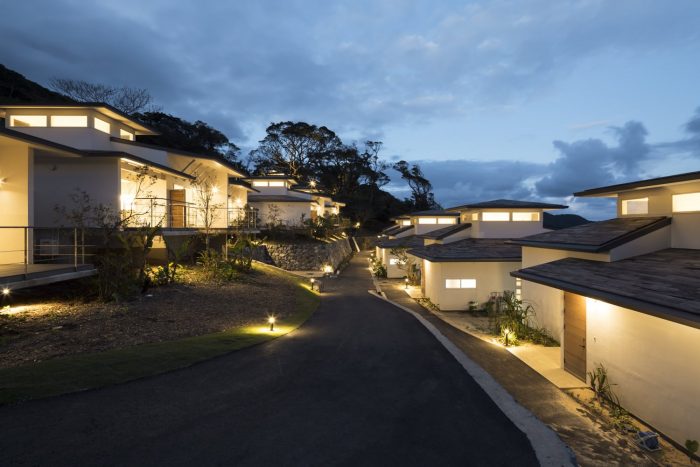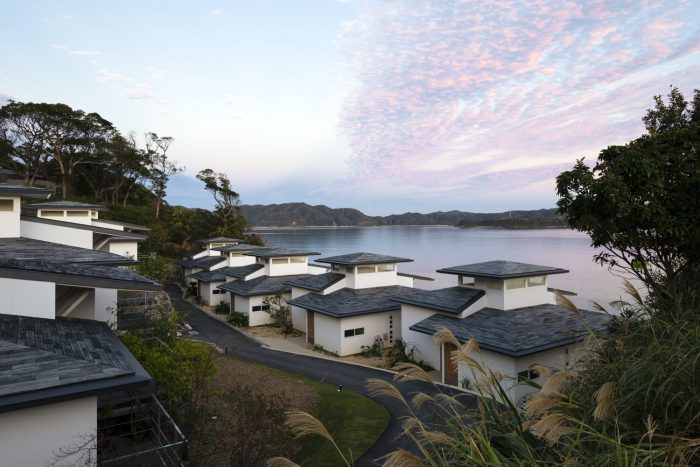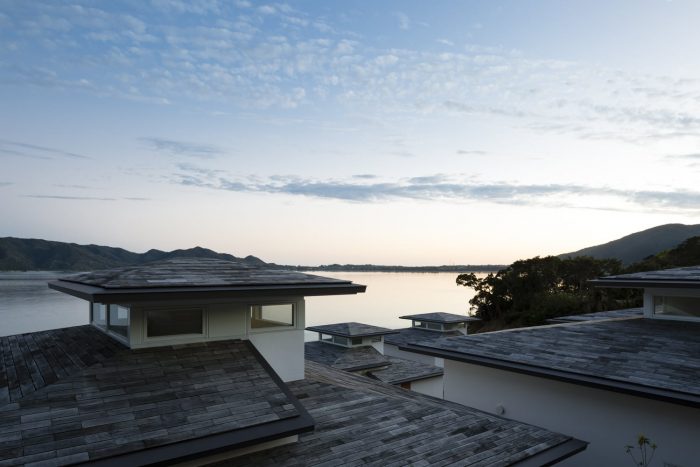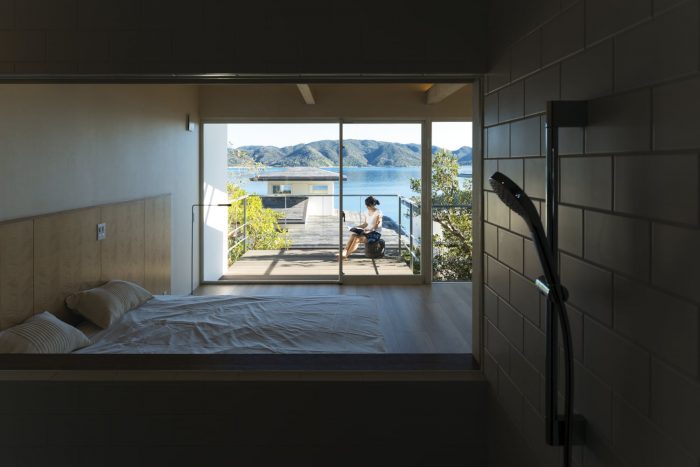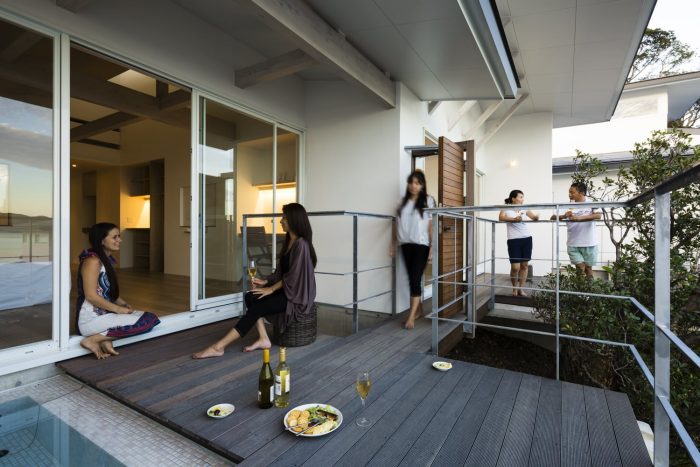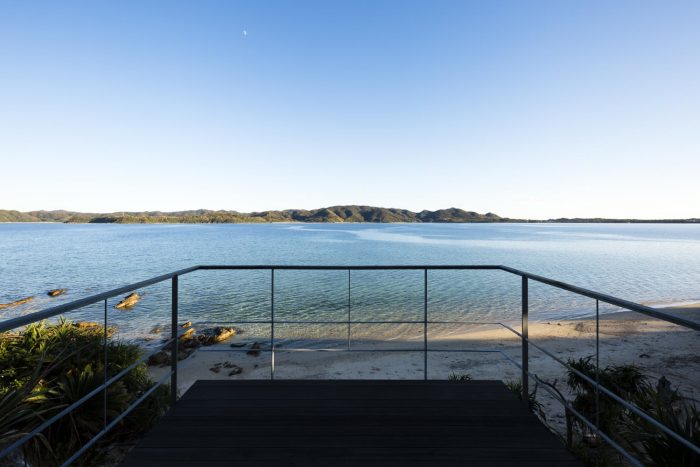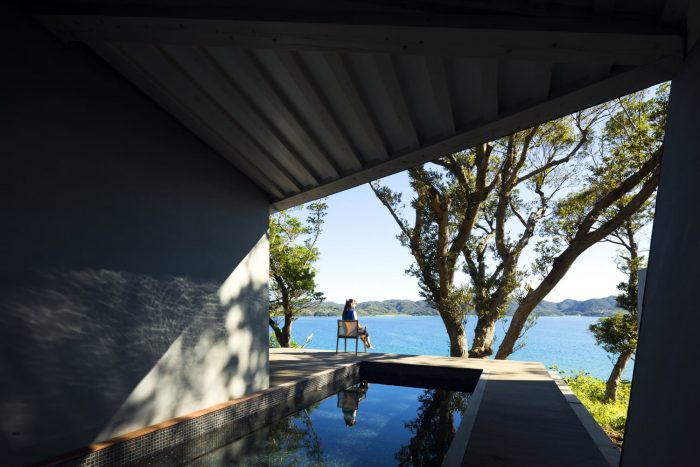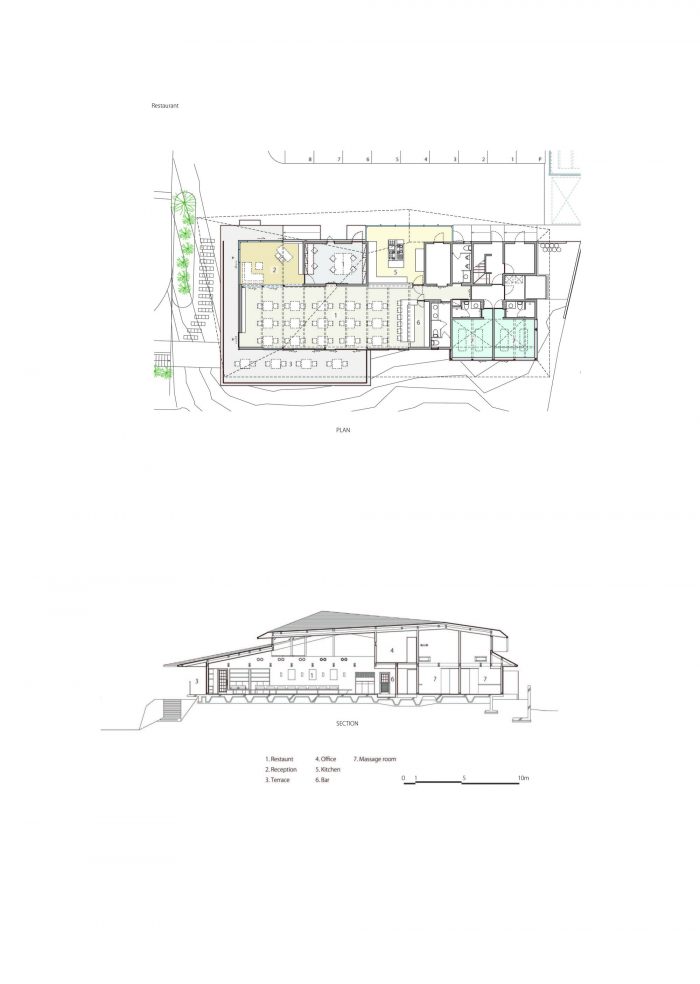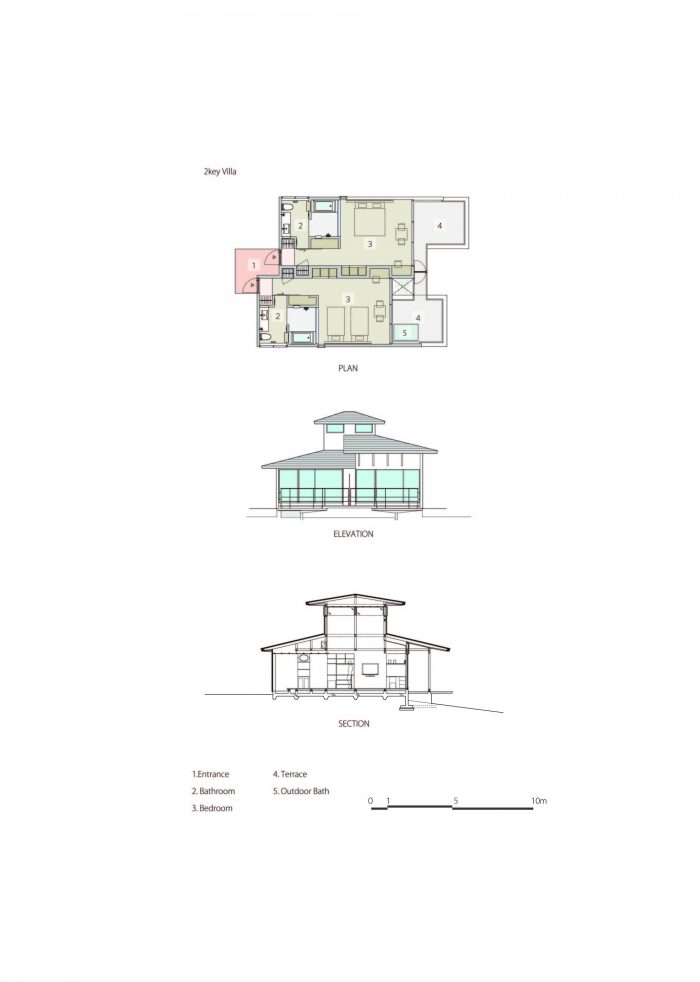这个度假区位于奄美大岛,TEKUTO的首席建筑师山下康弘的出生地,是冲绳和九州南部之间的奄美群岛的最大岛屿。一个拥有6万居民的亚热带岛屿,正在等待联合国教科文组织的世界自然遗产登记。奄美机场每天有44个航班进出,使得交通便利。其独特的文化以其民歌和舞蹈而闻名,受到冲绳琉球王朝和江户时代(1603-1868年)覆盖九州大部分地区的萨摩藩文化的影响。
This resort complex is located in Amami Oshima, TEKUTO’S chief architect Yasuhiro Yamashita’s birth place, the largest island of the Amami archipelago halfway between Okinawa and southern Kyushu. A subtropical island with 60 thousand residents, awaiting the UNESCO World Natural Heritage registration. Amami Airport has 44 flights coming in and out per day, enabling easy access. Its unique culture is renowned for its folk songs and dances, influenced by cultures of both the Ryukyu Dynasty of Okinawa and the Satsuma Domain which covered a large part of Kyushu during the Edo period (1603-1868.) Its forests are rich in flora and fauna such as dark-furred Amami rabbits and is surrounded by beautiful coral reefs.
甘蔗和水果种植是其主要产业,同时还有传统产业,如大岛Tsumugi纺织品(用富含铁质的泥浆染色的丝绸和服面料)生产。尽管它有这么大的魅力,但它缺少的是为高端旅客提供的住宿。
Sugarcane and fruit farming are its major industries along with traditional industries such as Oshima Tsumugi textile (silk kimono fabric dyed with iron rich mud) production. In spite of all its charm, one thing it lacked was accommodations for high-end travelers.
山下亲自寻找理想的地点,从2015年3月开始。施工是在2016年8月至2017年11月。该建筑群由带有接待处和餐厅的行政楼、3栋豪华泳池别墅和10栋半独立式别墅组成,共14栋楼,23间客房。
Yamashita personally searched for the ideal site, starting in March 2015. The construction was from August 2016 to November 2017. The complex is comprised of an administration building with the reception and restaurant, 3 luxury pool villas and 10 semi-detached villas, totaling 14 buildings with 23 guest rooms.
场地向下倾斜25米,宁静的私密小路通向东南方向安静的内陆海。景观设计恢复了原有的本土海景,同时将结构嵌入到周围环境中。
The site slopes down 25m with the tranquil, intimate path leading down to the quiet inland sea to the southeast. Landscaping restores the original indigenous seascape while embedding the structures into the surroundings.
建筑师与结构工程师合作,开发了泳池别墅的形式,其灵感来自于传统的阿玛米亚高架粮仓、传统的当地坡屋顶房屋和阿玛米亚海螺壳。
The architect worked with the structural engineer to develop the form of the Pool Villas, inspired by traditional Amamian raised-floor granaries, traditional local hip-and-gable roof houses and Amamian conch-shells.
外墙和屋顶采用为该项目开发的银灰色木板进行装饰。大岛津木的传统泥浆染色法被应用于Itajii(当地的Castanopsis sieboldii)木材。将富含单宁的木材浸泡在富含铁的奄美泥浆中,通过化学反应使其变成深灰色。
The exterior walls and roofs are clad with silver-gray wood planks developed for this project. The Oshima Tsumugi traditional mud-dyeing method was applied to Itajii (local Castanopsis sieboldii) lumber. Soaking the tannin rich lumber in the iron-rich mud of Amami, turns it into a deep gray color through a chemical reaction.
这些木板也被用于其他建筑的屋顶。半独立式别墅在平面和剖面上都有节奏地交错排列,其中一半通过露台连接,供套房使用。餐厅建筑的屋顶以奇特的角度相互重叠,动态地突出,给室内空间带来了旋转的感觉和多层次的复杂性。这样的建筑形式和多层次的空间都来自于一个基本的概念,即 “设计中间地带”,将整个项目联系在一起。
The planks were used for the roofs of the other structures as well. The semi-detached villas rhythmically stagger, both in plan and section, half of which are connected via the terrace for suite use. The roofs on the restaurant building overlap each other at odd angles, protruding dynamically, giving the interior space a swirling feel and multilayered complexity. Such architectural forms and multilayered space all come from an underlying concept, “Designing the In-betweens” that ties the whole project together.
设计中间地带
在地理和历史上,奄美总是发现自己处于他人之间。自中世纪到江户时代,它一直是被剥削的对象,多次被龙库王朝和萨摩藩轮流索取。二战后,它被美国统治了8年,然后在1953年归还给日本。
Designing the In-betweens
Amami has always found itself between others, both geographically and historically. Since the medieval era to the Edo period, it was the target of exploitation, repeatedly claimed in turns by Ryuku Dynasty and Satsuma Domain. After WWII, it was governed by the US for 8 years before being returned to Japan in 1953.
山下认为这个委托是出于多种原因而来。他来自这个岛屿,创造了许多具有紧凑空间的特色建筑,开发了独创的建筑方法和结构,使用了各地区的当地材料,并长期研究度假酒店。接受这个委托后,他重新研究了奄美岛的历史和自然,并对奄美岛现有的住宿设施进行了广泛的调查。他的结论是:”在奄美和为奄美设计 “是一个 “设计中间环节 “的问题。
Yamashita thinks this commission came to him for a number of reasons. Being from this island, having created numerous, characteristic architecture with compact spaces, having developed original construction methods and structures, the use of local materials of various regions and having researched resort hotels for a long period of time. On receiving this commission, he re-studied the history and nature of Amami and conducted an extensive survey of the existing accommodations in Amami. His conclusion was “designing in and for Amami” was a matter of “designing the in-betweens.”
这个概念有五个方面。
1. 在广阔的天空和大海之间实现一种自我解放的感觉
2. 恢复当地已经恶化的本土植被,将其置于自然和人类活动之间
3. 在传统和新建筑之间结合传统和新的感觉
4. 在传统工业的方法和新材料之间,开发一种奄美的独特建筑材料。
5. 在奄美群岛正式被列入联合国教科文组织自然遗产之前,提供各种住宿设施和餐饮服务。
The concept has five aspects.
1. Achieving a sense of self liberation between the vast sky and sea
2. Restoring the local indigenous vegetation which has deteriorated, placed in between nature and human activity
3. Combining a sense of tradition and newness, between traditional and new architecture
4. Developing a material for architecture unique to Amami in between methods of traditional industries and new materials
5. Providing a wide variety of accommodation facilities and food services in between times, before Amami Islands is formally enlisted as a UNESCO natural heritage site.
设计中间地带绝不是一种消极的心态,这个概念是通过确定自己的立场,从历史中学习,打破现状,掌握自己的未来,从而取得进步的一种新方式。
Designing the in-betweens is by no means a negative mindset and the concept is a new way of making progress through defining one’s own standpoint, learning from history, breaking the status quo, and taking control of one’s own future.
Architects: Atelier Tekuto
Year : 2017
Photographs :Toshihiro Sobajima
Manufacturers : Elmes, Olivebricks, Sankyo Tateyama, Toto, Ueda Shikimono
Lead Architects : Yasuhiro Yamashita, Ben Matsuno / Atelier TEKUTO, Amami Design Firm
Contractor : Hatakeyama Construction Co.Ltd, Takeyama Construction Co.Ltd.
Structural Engineers : Jun Sato Structural Engineers, Jun Sato, Kenichi Inoue
Lighting Design : Matsushita Lighting Design
Interior Design : Jamo Associates, Norito Takahashi, Yusuke Nakao
MEP Engineering : BE Link, Tetsuhito Shoji
Preliminary Mep Engineering : Hiroyuki Yamada / YMO
Preliminary Lighting Design : Miki Matsushita, Naoki Takayama, Hiroaki Miyake / Miki
Preliminary Landscape Design : Hiroshi Yanagihara / Mindscape Ltd.
Retaurant Building : 400.58 m2
2 Key Villa(X10 ) : 74.53 m2
Pool Villa(X3 ) : 55.23 m2
Preliminary Mep Engineering : Hiroyuki Yamada / YMO
Preliminary Lighting Design : Miki Matsushita, Naoki Takayama, Hiroaki Miyake / Miki
Preliminary Landscape Design : Hiroshi Yanagihara / Mindscape Ltd.
City : Tatsugo
Country : Japan

